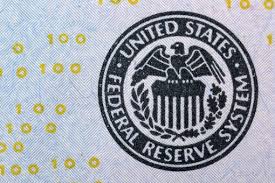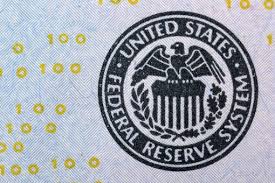
The Federal Reserve Chair Jerome Powell sent a clear message: while it is "gratifying" that inflation has begun to slow, the central bank is far from reversing course or declaring victory.
"It's going to take some time" for disinflation to spread through the economy, Powell said in a news conference following the Fed's latest quarter-point interest rate increase. He said he expects a couple more rate hikes still to go, and, "given our outlook, I just I don't see us cutting rates this year."
Investors ignored his comments and sentiments, betting on just one more rate hike and increasing their bets that rates will be lower by the end of the year than they are now.
It's unclear which view will be correct: neither the Fed nor markets have a good track record of forecasting since the Fed's current round of rate hikes began in March.
Markets have repeatedly had to abandon bets on a quick pivot, pushing those expectations further out as the Fed pursued the most aggressive policy tightening in 40 years.\
For their part, Fed policymakers raised their own estimates for how high they'd raise interest rates each quarter last year as inflation proved stronger and stickier than expected. They never indicated that rates would be cut this year.
The present disconnect will be resolved largely by whether inflation falls faster than the central bank expects or labor markets soften more than it expects.
"The actual outcome is data dependent, and we won't have the data to confirm or deny...until we are deeper into the first half of the year," said Tim Duy, chief U.S. economist at SGH Macro Advisors.
And as long as there is uncertainty, Powell should try to keep financial markets from betting too heavily on rate cuts, which would loosen financial conditions and potentially undermine the Fed's hard-won progress against inflation.
Even acknowledging the possibility of a rate cut later this year could undo some of the Fed's work, forcing more Fed tightening and making avoiding a recession even more difficult. Thus Powell's repeated assertions about not cutting rates and, in fact, the need to raise them to at least 5%, as policymakers predicted in December.
"It is our judgment that we're not yet in a sufficiently restrictive policy stance, which is why we say that we expect ongoing hikes will be appropriate," Powell said.
However, according to Megan Greene, Global Chief Economist at Kroll Institute, "the markets aren't buying what the Fed is peddling."
The benchmark overnight lending rate set by the central bank is now 4.50%-4.75%. Interest-rate futures traders are pricing in another 25 basis point increase in March before the Fed takes a break to assess how its interest-rate hike from near zero a year ago is slowing the economy.
They anticipate that rate cuts will begin in September, a view that Powell stated on Wednesday is motivated by the expectation of rapidly declining inflation.
Cutting in September or waiting until next year would both be within the historical range. Since the 1990s, the period between rate hikes and rate cuts has ranged from 18 months in 1997-1998 to five months in 1995.
Over the last three months, inflation data has been trending in the right direction. According to the Fed's preferred measure, annual inflation is now running at 5.0%, still more than twice the central bank's 2% target but down from a high of 7% last summer.
Wage pressures are also easing, which may allow the Fed to lower rates later this year as it attempts to engineer the elusive'soft landing,' in which inflation falls without harming economic growth.
(Source:www.usnews.com)
"It's going to take some time" for disinflation to spread through the economy, Powell said in a news conference following the Fed's latest quarter-point interest rate increase. He said he expects a couple more rate hikes still to go, and, "given our outlook, I just I don't see us cutting rates this year."
Investors ignored his comments and sentiments, betting on just one more rate hike and increasing their bets that rates will be lower by the end of the year than they are now.
It's unclear which view will be correct: neither the Fed nor markets have a good track record of forecasting since the Fed's current round of rate hikes began in March.
Markets have repeatedly had to abandon bets on a quick pivot, pushing those expectations further out as the Fed pursued the most aggressive policy tightening in 40 years.\
For their part, Fed policymakers raised their own estimates for how high they'd raise interest rates each quarter last year as inflation proved stronger and stickier than expected. They never indicated that rates would be cut this year.
The present disconnect will be resolved largely by whether inflation falls faster than the central bank expects or labor markets soften more than it expects.
"The actual outcome is data dependent, and we won't have the data to confirm or deny...until we are deeper into the first half of the year," said Tim Duy, chief U.S. economist at SGH Macro Advisors.
And as long as there is uncertainty, Powell should try to keep financial markets from betting too heavily on rate cuts, which would loosen financial conditions and potentially undermine the Fed's hard-won progress against inflation.
Even acknowledging the possibility of a rate cut later this year could undo some of the Fed's work, forcing more Fed tightening and making avoiding a recession even more difficult. Thus Powell's repeated assertions about not cutting rates and, in fact, the need to raise them to at least 5%, as policymakers predicted in December.
"It is our judgment that we're not yet in a sufficiently restrictive policy stance, which is why we say that we expect ongoing hikes will be appropriate," Powell said.
However, according to Megan Greene, Global Chief Economist at Kroll Institute, "the markets aren't buying what the Fed is peddling."
The benchmark overnight lending rate set by the central bank is now 4.50%-4.75%. Interest-rate futures traders are pricing in another 25 basis point increase in March before the Fed takes a break to assess how its interest-rate hike from near zero a year ago is slowing the economy.
They anticipate that rate cuts will begin in September, a view that Powell stated on Wednesday is motivated by the expectation of rapidly declining inflation.
Cutting in September or waiting until next year would both be within the historical range. Since the 1990s, the period between rate hikes and rate cuts has ranged from 18 months in 1997-1998 to five months in 1995.
Over the last three months, inflation data has been trending in the right direction. According to the Fed's preferred measure, annual inflation is now running at 5.0%, still more than twice the central bank's 2% target but down from a high of 7% last summer.
Wage pressures are also easing, which may allow the Fed to lower rates later this year as it attempts to engineer the elusive'soft landing,' in which inflation falls without harming economic growth.
(Source:www.usnews.com)





